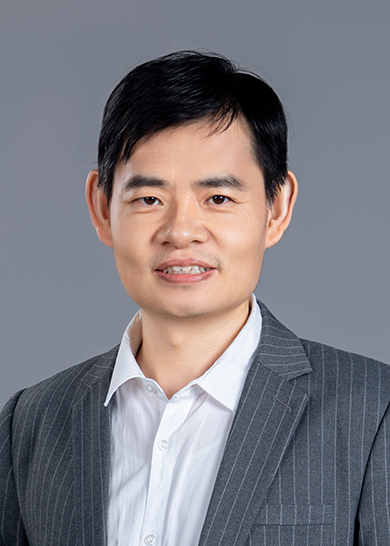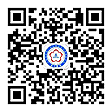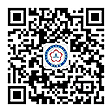


1999年至2002年:山东医学科学院,医学硕士。
2002年至2005年:清华大学医学院,理学博士。
2005年至2010年:美国威斯康星大学-麦迪逊(University of Wisconsin-Madison),博士后、助理研究员。
2010年至今: 中国科学院广州生物医药与健康研究院,研究员。
1、人胚胎干(ES)细胞多能性及自我更新的分子生物学调控。借助人胚胎干细胞为模型,研究不同生物学层面包括,信号传导,转录因子,表观遗传学(Signaling Pathway, Transcription Factor and Epigetics)等对于人ES 细胞多能性和分化的调控。并探讨这些不同层面之间的相互作用及调控机制。
2、 人诱导性多能干(iPS)细胞的形成及临床应用的可行性实验室研究。
在Nature Methods、Cell Stem Cell、Cell、Stem Cell Reports、 FASEB J、JBC、Cell Res、Stem Cell Reports、Biomaterails等杂志发表论文30余篇,共被引用2000多次。主要工作是:将人尿液细胞转变为非整合的神经干细胞;首次发现人胚胎干细胞具有特殊的组蛋白甲基化调控模式;在国内率先开展胚胎干细胞转录因子(Oct4, Sox2, Nanog)对多能性的调控研究,首次发现干细胞中转录因子间的负反馈调控机制。
(*为通讯作者)
1. Wang, L., Wang, L., Huang, W., Su, H., Xue, Y., et al, Pan, G*., and Pei, D*. Generation of integration-free neural progenitor cells from cells in human urine. Nature Methods 10, 84-89 (2013)
2. Ma, N., Shan, Y., Liao, B., Kong, G., Wang, C., et al., Chen, N*., and Pan, G*. Factor-induced Reprogramming and Zinc Finger Nuclease-aided Gene Targeting Cause Different Genome Instability in β-Thalassemia Induced Pluripotent Stem Cells (iPSCs). Journal of Biological Chemistry 290, 12079-12089 (2015)
3. Ma N, Liao B, Zhang H, Wang L, Shan Y, et al, Pan, G*. Transcription activator-like effector nuclease (TALEN)-mediated gene correction in integration-free β-thalassemia induced pluripotent stem cells. Journal of Biological Chemistry 288,34671-34679(2013)
4. Wang, L., Li, X., Huang, W., Zhou, T., Wang, H., Lin, A., Hutchins, A. P., Su, Z., Chen, Q., Pei, D., and Pan, G*. TGFβ signaling regulates the choice between pluripotent and neural fates during reprogramming of human urine derived cells. Scientific Reports 6, 22484 (2016)
5. Li D, Wang L, Hou J, et al. Optimized Approaches for Generation of Integration-free iPSCs from Human Urine-Derived Cells with Small Molecules and Autologous Feeder. Stem Cell Reports, 6(5): 717-728 (2016)
6. Wang H, Hu L, Liu C, et al. 5-HT2 receptors mediate functional modulation of GABAa receptors and inhibitory synaptic transmissions in human iPS-derived neurons. Scientific Reports, 6: 20033 (2016)
7. Xue, Y., Cai, X., Wang, L., Liao, B., Zhang, H., et al, Pan, G*. Generating a Non-Integrating Human Induced Pluripotent Stem Cell Bank from Urine-Derived Cells. PLoS ONE 8, e70573 (2013)
8. Liu, J., Wang, L., Su, Z., Wu, W., Cai, X., Li, D., Hou, J., Pei, D., and Pan, G*. A reciprocal antagonism between miR-376c and TGF-b signaling regulates neural differentiation of human pluripotent stem cells. Faseb Journal 28, 4642-4656. (2014)
9. Huang, K., Jia, J., Wu, C., Yao, M., Li, M., et al, Pan, G*., and Yao, H*. Ribosomal RNA Gene Transcription Mediated by the Master Genome Regulator Protein CCCTC-binding Factor (CTCF) Is Negatively Regulated by the Condensin Complex. Journal of Biological Chemistry 288, 26067-26077 (2013)
10. Huang K, Liu P, Li X, Chen S, Wang L, et al, Pan, G*. Neural progenitor cells from human induced pluripotent stem cells generated less autogenous immune response. SCIENCE CHINA-Life Sciences 57,162-170(2014)
11. Liu, P., Chen, S., Li, X., Qin, L., Huang, K., et al, Pan, G*., Cai, J*., and Pei, D*. Low Immunogenicity of Neural Progenitor Cells Differentiated from Induced Pluripotent Stem Cells Derived from Less Immunogenic Somatic Cells.PLoS ONE 8, e69617 (2013)
12. Pan, G., and Pei, D*. Order from Chaos: Single Cell Reprogramming in Two Phases. Cell Stem Cell 11, 445-447.(2012)
13. Pan, G., Wang, Tao., Yao, H., Pei D.* Somatic cell reprogramming for regenerative medicine: SCNT vs. iPS cells. BIOESSAYS 34 472-476.(2012)
14. Wang, T., Chen, K., et al., Esteban, Miguel A., Pan, G., and Pei, D*.The Histone Demethylases Jhdm1a/1b Enhance Somatic Cell Reprogramming in a Vitamin-C-Dependent Manner. Cell Stem Cell 9 575-587 (2011)
16. Xu, N., Papagiannakopoulos, T., Pan, G., Thomson, J. A., and Kosik, K. S. MicroRNA-145 regulates OCT4, SOX2, and KLF4 and represses pluripotency in human embryonic stem cells. Cell 137, 647-658 (2009)
17. Xu, R.-H., Sampsell-Barron, T. L., Gu, F., Root, S., Peck, R. M., Pan, G., et al., Thomson, J. A. NANOG Is a Direct Target of TGF[beta]/Activin-Mediated SMAD Signaling in Human ESCs. Cell Stem Cell 3, 196-206 (2008)
18. Pan, G., Tian, S., Nie, J., Yang, C., et al., Thomson, J. A. Whole-Genome Analysis of Histone H3 Lysine 4 and Lysine 27 Methylation in Human Embryonic Stem Cells. Cell Stem Cell 1, 299-312(2007) (被引334次)
19. Pan, G*., and Thomson, J. A. NANOG and transcriptional networks in embryonic stem cell pluripotency.Cell Research 17, 42-49(2007) (被引195次)
20. Pan, G., Li, J., Zhou, Y., Zheng, H., and Pei, D. A negative feedback loop of transcription factors that controls stem cell pluripotency and self-renewal. FASEB J 20, 1730-1732(2006) (被引114次)
21 Pan, G., and Pei, D. The stem cell pluripotency factor NANOG activates transcription with two unusually potent subdomains at its C terminus. Journal of Biological Chemistry 280, 1401-1407 (2005)
22. Pan, G., Qin, B., Liu, N., Scholer, H. R., and Pei, D. Identification of a nuclear localization signal in OCT4 and generation of a dominant negative mutant by its ablation. Journal of Biological Chemistry 279, 37013-37020 (2004)
23. Pan, G., and Pei, D. Identification of two distinct transactivation domains in the pluripotency sustaining factor NANOG. Cell Research 13, 499-502 (2003)
24. Pan, G., Chang, Z. Y., Scholer, H. R., and Pei, D. Stem cell pluripotency and transcription factor OCT4. Cell Research 12, 321-329 (2002) (被引141次)

